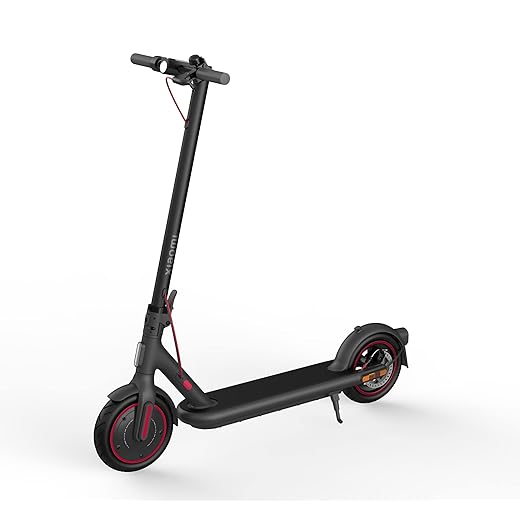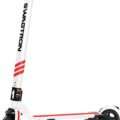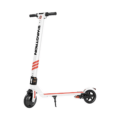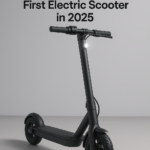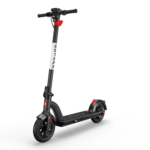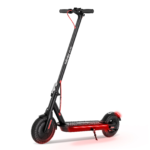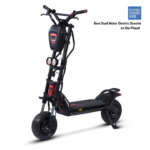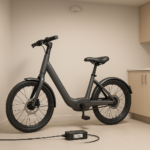- Home
- Scooters
- Compare Scooters
- Xiaomi 4 Pro vs Segway F2 (Value vs Ecosystem)
Xiaomi 4 Pro vs Segway F2 (Value vs Ecosystem)
Table of contents
- What This Comparison Covers (Quick Summary)
- At-A-Glance Verdict
- Spec Snapshot (Side-by-Side)
- Ride Experience & Performance
- Comfort & Control
- Portability & Storage
- Safety, Visibility & Compliance
- Smart Features & Ecosystem (Core Theme)
- Value Analysis & Total Cost of Ownership (TCO)
- Who Should Buy Which?
- Alternatives to Consider (Very Brief)
- FAQs
- Comparison Scorecard
- Pros & Cons
- Testing Notes & Disclaimers (Short)
- Unit Conversion Helper
- Final Verdict
- Price
Hook intro. Choosing between the Xiaomi Electric Scooter 4 Pro and the Segway Ninebot F2 often comes down to a single trade-off: raw value versus a broader ecosystem. Consequently, Xiaomi pushes higher capacity and power at a sharp spec-per-euro, while Segway counters with polished app features, turn indicators, traction control, and a large service network. Overall, this guide breaks down the differences so you can pick confidently for your daily commute.
What This Comparison Covers (Quick Summary)
- Ride feel & performance: acceleration, hill climbing, top speed stability, and braking.
- Real-world range: how the claimed numbers translate to everyday commuting.
- Comfort & control: tires, damping, ergonomics, and noise/vibration.
- Portability & storage: folding, weight, and weather protection.
- Safety & compliance: lighting, indicators, traction aids, and region-specific limits.
- Smart features & ecosystem: app experience, firmware updates, accessories, and support.
- Value & TCO: what you pay up front and over time for parts, tires, and downtime.
- Who should buy which: quick personas to match your use case.
At-A-Glance Verdict
- Value-seeker: Xiaomi 4 Pro (2nd Gen) — more Wh, higher rated/max power, and longer stated range for the money.
- Ecosystem-lover: Segway F2 — cleaner app polish, traction control (TCS), built-in indicators, and a wide service/parts pipeline.
- First-time rider: Segway F2 — intuitive app, strong safety add-ons, and predictable brakes.
- Budget commuter wanting max range: Xiaomi 4 Pro (2nd Gen) — ~60 km (37 mi) stated range and a big 468 Wh pack.
- Heavier rider (up to 120 kg / 265 lb): Tie — both rate max load at 120 kg; however, Xiaomi’s higher max power helps on grades, whereas Segway’s TCS helps grip.
- Pothole-prone routes: Segway F2 — self-sealing 10-inch tubeless tires, traction control, and clear indicator visibility.
Spec Snapshot (Side-by-Side)
Important note on model naming: This comparison uses Xiaomi Electric Scooter 4 Pro (2nd Gen) because it is the current global listing. Nevertheless, in some regions you may still find the first-generation 4 Pro with slightly different weight, power, and brakes. Where relevant, we flag the differences.
| Category | Xiaomi 4 Pro (2nd Gen) | Segway Ninebot F2 |
|---|---|---|
| Price (MSRP) | Varies by region (mid-range) | Varies by region (mid-range) |
| Rated / Max Motor Power | 400 W / 1000 W | 350 W / 700 W (EU pages often 400 W / 800 W) |
| Top Speed | 25 km/h (15.5 mph) | 30 km/h (18.6 mph) US; 25 km/h (15.5 mph) EU |
| Battery Capacity | 468 Wh (48 V, 10 Ah) | 367 Wh (36 V, 10.2 Ah) |
| Claimed Range | ~60 km (37 mi) | ~40 km (25 mi); ~30 km (18 mi) at max speed |
| Charge Time / Charger | ~9 h / ~70 W (54.6 V) | ~6.5 h / ~70 W (41 V 1.7 A) |
| Tires & Suspension | 10″ widened tubeless; no suspension | 10″ self-sealing tubeless; no suspension; TCS (traction control) |
| Brakes | Front drum + rear E-ABS | Front disc + rear E-ABS |
| Weight / Max Load | 19 kg (41.9 lb) / 120 kg (265 lb) | 17.2 kg (37.9 lb) / 120 kg (265 lb) |
| Water Resistance (IP) | IPX4 | IPX5 |
| Dimensions (folded/unfolded) | Standard commuter footprint | ~1143.5×570×484 mm / ~1143.5×570×1214 mm |
| Lighting & Visibility | Auto headlight, taillight; built-in direction indicators | Headlight, reflectors; built-in front & rear indicators |
| App Support | Mi/Xiaomi Home: lock, lights, regen, firmware, auto headlight | Segway-Ninebot: lock, ride modes, TCS, speed/accel tuning, Find My (region-dependent) |
| Warranty / Certs | Region-specific; E-Mark indicators | Region-specific; CE/EU claims, E-Mark indicators; UL in some markets |
Ride Experience & Performance
Acceleration & Hill Climbing
To begin with, the Xiaomi 4 Pro (2nd Gen) delivers 400 W rated and 1000 W max output that you feel off the line and on grades. As a result, on gentle city inclines the scooter holds speed with less fade, and you’ll usually remain in Sport mode without drama. Moreover, the rear-drive layout and wider 10-inch tubeless tires give you confident launches, provided you maintain correct pressures.
By contrast, the Segway F2 starts softer yet remains predictable. In many regions its 350–400 W rated motor peaks at 700–800 W, which is sufficient for typical urban hills when you carry momentum. Additionally, because Segway exposes more tuning in the app, you can adjust acceleration in Sport mode to suit traffic density. Meanwhile, TCS helps meter torque on slick paint or cobbles.
Takeaway: Xiaomi feels punchier up slopes; however, Segway feels more controlled on marginal surfaces.
Top Speed & Stability
In the EU, both cap at 25 km/h (15.5 mph) by regulation. In the US, the F2 reaches ~18 mph (30 km/h), which, in turn, shortens commutes on long, open paths. Even so, stability at those speeds depends on tire compliance and steering geometry. Fortunately, both run 10-inch tubeless tires and track straight at commuter speeds. Furthermore, Xiaomi’s wider tread adds calm in crosswinds, while Segway’s app-tunable modes let you dial confidence quickly.
Braking
On the braking front, Xiaomi pairs a front drum with rear E-ABS; consequently, modulation is smooth and maintenance is simple. Conversely, Segway uses a front disc with rear E-ABS; therefore, lever feel is a touch sharper, which helps emergency stops once you’re used to the bite. Either way, regen provides gentle deceleration and recovers a bit of energy.
Range in the Real World
On paper, Xiaomi’s ~60 km (37 mi) eclipses the F2’s ~40 km (25 mi). In practice, however, most riders see 20–40% less than the headline number when riding faster, carrying 85–100 kg (187–220 lb), facing hills, or dealing with cold weather. Consequently, you can expect ~22–30 mi (35–48 km) from Xiaomi at conservative speeds and ~14–20 mi (22–32 km) from the F2. Notably, the F2 posts ~18 mi (30 km) at top speed in internal testing. Therefore, plan your routes with a buffer.
Comfort & Control
Tires & Damping
From a comfort perspective, both use 10-inch tubeless tires. However, Xiaomi’s widened tread improves footprint and reduces harshness over joints. Meanwhile, Segway’s self-sealing jelly layer shrugs off small punctures and pairs with TCS to maintain traction on wet tiles or zebra crossings. Since neither has a suspension fork, tire pressure and speed choice matter more than on sprung models.
Deck & Ergonomics
Ergonomically, deck room is commuter-standard on both. In addition, taller riders appreciate the neutral bar height and clear dashboard readouts. Furthermore, Xiaomi’s display tilts slightly toward the rider and shows turn-signal status, whereas Segway’s cockpit is wide and accessory-friendly, which helps if you mount a phone for navigation.
Noise & Vibration
As for noise, both scooters run quietly when new. Over months of use, however, periodic checks of stem clamps and fender mounts keep rattles away. Moreover, disc systems (Segway) can squeal when wet; by comparison, drums (Xiaomi) tend to stay quieter but offer a different lever feel.
Portability & Storage
Folding Mechanism
Regarding portability, each folds in seconds. Specifically, Xiaomi’s three-step design feels sturdy once latched; likewise, Segway’s F2 latch locks with a safe, familiar motion. Nevertheless, always check latch play after transport and re-tighten hardware as part of routine care.
Weight & Carryability
Weight-wise, Xiaomi (2nd Gen) is 19 kg (41.9 lb), whereas Segway F2 is ~17.2 kg (37.9 lb). Therefore, if you climb multiple flights daily, the F2’s lower mass helps. Conversely, if you ride mostly door-to-door, the extra battery in Xiaomi pays off with longer legs.
Storage & Weather
Weather resistance also matters. Xiaomi rates IPX4, while Segway rates IPX5. Thus, both are splash-resistant, not submersible. You can ride in light rain and across shallow puddles; however, avoid pressure washing, deep standing water, and storage in damp sheds. Additionally, wipe the deck and plugs after wet commutes.
Safety, Visibility & Compliance
Lighting & Indicators
In terms of visibility, both include a headlight, taillight, reflectors, and built-in turn indicators. Importantly, Xiaomi highlights E-Mark-certified indicator modules; similarly, Segway advertises front and rear indicators with wide viewing angles. Consequently, using indicators makes your path changes clearer in traffic, especially at dusk.
Tires & Wet Grip
When roads are wet, rubber compound and tread matter; however, TCS on the F2 helps most in drizzle, painted lanes, and tram tracks. Of course, it won’t defy physics; instead, it simply reduces sudden slip by modulating torque. Therefore, keep realistic speeds and straight bars when braking on slick surfaces.
Regional Limits & Certifications
Regionally, EU models typically cap to 25 km/h and include lighting/indicator compliance. In the US, by contrast, F2 variants may run faster (around 18 mph). Because certification labels and warranty terms vary, check your local product page or the box for details.
Smart Features & Ecosystem (Core Theme)
App Experience
On the software side, Xiaomi Home (Mi Home) connects over Bluetooth and lets you check battery status, lock the motor, control lights, set regenerative-braking strength, and apply firmware updates. As a bonus, UI elements are simple, and auto-headlight can be toggled from the app.
Meanwhile, Segway-Ninebot layers on more ride tuning, including speed caps per mode, acceleration strength, and TCS enablement. In many regions, you also get Apple Find My support to help locate a misplaced scooter. Consequently, the Segway app feels cohesive if you own other Ninebot products.
Accessory Ecosystem
Beyond the app, Segway’s F-Series shares accessories across variants (tires/tubes, brake parts, fenders, chargers), and the store/support portals make ordering straightforward. Conversely, Xiaomi’s ecosystem is broad too, but parts availability varies more between first-gen and 2nd Gen 4 Pro (drum vs disc brake, different battery voltage). Therefore, when you plan long-term ownership, verify that your local distributor stocks your version’s wear parts.
Service & Support
For service, Segway maintains an accessible support hub, manuals, and a service-center locator; consequently, downtime often shortens if you need professional repairs. Xiaomi’s official pages provide specs and documentation as well. Even so, logistics can be more region-dependent, especially for specific generations.
Community & Longevity
Over the long haul, both brands push firmware updates. Historically, Segway favors conservative safety defaults that you can tweak; meanwhile, Xiaomi emphasizes battery-management improvements and a clean dash/app flow. For longevity, treat tires, batteries, and latches as wear items and budget replacements annually if you ride daily.
Value Analysis & Total Cost of Ownership (TCO)
Upfront Price vs Delivered Performance
Because MSRPs and promos vary by country and season, the cleanest “value” comparison is capacity and power per kilogram:
- Xiaomi: 468 Wh and 1000 W max in 19 kg — thus, strong range-per-kg and peak-per-kg metrics.
- Segway: 367 Wh and 700–800 W max in 17.2 kg — consequently, lighter and easier to carry, but shorter stated range.
Charging & Electricity Costs
From an energy standpoint, both draw ~70 W from the wall. A full Xiaomi charge (468 Wh) uses ~0.47 kWh; a full Segway charge (367 Wh) uses ~0.37 kWh. At €0.25/kWh, that’s ~€0.12 and ~€0.09 per full charge respectively. Therefore, if you commute 20 workdays × 16 km (10 mi) round-trip, either scooter costs well under €2/month in electricity in mild weather.
Maintenance & Parts
Ongoing costs also matter. Accordingly, budget annually for:
- Tires/Tubes: tubeless seals reduce punctures; nevertheless, tread and sidewalls still age.
- Brake wear: disc pads (Segway) are cheap; drum shoes (Xiaomi) last long but may require a specific part number.
- Misc: fenders, kickstands, and cables if ridden daily on rough paths.
Since Segway’s official parts store and manuals are cohesive, DIY jobs feel straightforward. Conversely, Xiaomi’s parts are widely available but can differ across the two 4 Pro generations, so verifying compatibility first is wise.
Warranty, Returns, and Downtime Risk
Finally, warranty terms vary by region. In the EU, core components often carry two years, which aligns with consumer rules. Because faster parts access and documented procedures reduce downtime, TCO improves with clearer support. Therefore, check your retail channel for exact coverage in writing.
Who Should Buy Which?
Choose Xiaomi 4 Pro (2nd Gen) if…
- You want the longest stated range in this pairing without stepping up to ultra-premium models.
- You value higher max power for hills and heavier payloads.
- You prefer drum-brake simplicity and lower day-to-day brake maintenance.
- You mostly ride door-to-door and rarely carry the scooter up stairs.
- You like Mi/Xiaomi Home and a tidy dashboard with indicator alerts.
Choose Segway F2 if…
- You want polished app tuning, TCS, and integrated indicators for urban traffic.
- You carry the scooter often and appreciate the lower weight.
- You ride in variable weather and like the extra assurance of IPX5 and self-sealing tires.
- You value a clear service/parts pipeline and official documentation.
Who should skip each model?
- Skip Xiaomi 4 Pro if you need IPX5+ for frequent rain or hose-downs, or if local parts for the 2nd Gen are scarce right now.
- Skip Segway F2 if your commute is 40–55 km round-trip with no charging at work, or you need stronger hill reserves.
Alternatives to Consider (Very Brief)
- Xiaomi 4 Ultra: More motor and capacity if you want to stay in Xiaomi’s ecosystem and step up performance.
- Segway F2 Plus / F2 Pro: Same family with higher spec tiers, suspension on Pro, and stronger climbing.
- Ninebot Max G2: Bigger pack and suspension for comfort-first commuting.
(Models and availability vary by region.)
FAQs
Which has better hill climbing?
Generally, Xiaomi (2nd Gen) lists 400 W rated / 1000 W max and 22% max incline, so it will hold speed better on long grades. Meanwhile, Segway F2 can handle ~18% slopes with 700–800 W max, yet it will slow more with heavy riders.
Which is easier to maintain?
Drum brakes (Xiaomi) are low-maintenance; however, disc brakes (Segway) are simple to service and parts are widely available. Tire care is similar; additionally, Segway’s self-sealing layer helps with tiny punctures.
Which is more rain-friendly?
Both are splash-resistant, but F2’s IPX5 rating edges Xiaomi’s IPX4. Therefore, ride cautiously in rain and avoid deep puddles either way.
Which app is simpler for beginners?
Both are straightforward. Xiaomi focuses on essentials (lock, lights, regen, updates); meanwhile, Segway adds TCS and mode tuning that you can grow into.
Do regional differences matter?
Yes. EU variants cap speed at 25 km/h; however, US F2 runs ~18 mph (30 km/h). Additionally, motor ratings and power claims can differ by region and test protocols.
Is there a difference between first-gen Xiaomi 4 Pro and 2nd Gen?
Yes. 2nd Gen adds a 48 V system, 400 W rated / 1000 W max motor, 468 Wh battery, front drum brake, built-in indicators, and ~60 km range, at ~19 kg. By comparison, the first-gen typically lists 36 V, 350 W / 700 W, 446 Wh, rear disc, ~55 km, and ~17 kg.
Comparison Scorecard
| Category | Xiaomi 4 Pro (2nd Gen) | Segway F2 | Winner | Why (≤12 words) |
|---|---|---|---|---|
| Acceleration | Stronger peak, better hill hold | Adequate, tunable | Xiaomi | Higher peak power reserves. |
| Braking | Front drum + E-ABS | Front disc + E-ABS | Segway | Crisper lever feel and bite. |
| Range | ~60 km (37 mi) stated | ~40 km (25 mi) stated | Xiaomi | More Wh = longer legs. |
| Ride Comfort | Wider 10″ tires | Self-sealing 10″ + TCS | Segway | TCS steadies slick surfaces. |
| Portability | 19 kg (41.9 lb) | 17.2 kg (37.9 lb) | Segway | Lighter to carry. |
| Safety/Visibility | E-Mark indicators | Indicators + IPX5 | Segway | Better wet rating and signaling. |
| App/Ecosystem | Essentials, auto headlight | TCS, speed/accel tuning, Find My | Segway | Deeper feature set. |
| Maintenance/Parts | Vary by 4 Pro gen | Strong parts/store docs | Segway | Smoother parts pipeline. |
| Warranty/Support | Region-dependent | Robust portals & guides | Segway | Clear support hub. |
| Overall Value | Higher spec per kilo | Balanced feature ecosystem | Tie | Pick by range vs features. |
Pros & Cons
Xiaomi 4 Pro (2nd Gen)
Pros
- Big 468 Wh pack and ~60 km stated range.
- 400/1000 W output helps with hills.
- Built-in indicators and auto-headlight options via app.
- Drum brake: low maintenance and quiet.
- Wider 10″ tubeless tires improve stability.
Cons
- Heavier at 19 kg (41.9 lb) for stairs.
- IPX4 rating trails Segway’s IPX5.
- Parts can differ from first-gen 4 Pro (check before ordering).
Segway Ninebot F2
Pros
- IPX5 rating and self-sealing tires.
- TCS enhances grip on slick surfaces.
- Built-in indicators (front and rear).
- App tuning for speed and acceleration; Find My in some regions.
- Lighter at ~17.2 kg (37.9 lb).
Cons
- Shorter stated range (~25 mi / 40 km).
- 350–400 W rated motor feels milder on hills.
- Disc pads may squeal when wet (normal for the type).
Testing Notes & Disclaimers (Short)
- Range varies with rider weight, speed, temperature, wind, and elevation.
- Regional laws may cap top speeds; therefore, always comply with local regulations.
- Water resistance protects from splashes, not immersion or pressure washing.
- App features can vary by region and firmware.
Unit Conversion Helper
| Convert | Quick Reference |
|---|---|
| km/h → mph | multiply by 0.621 (25 km/h ≈ 15.5 mph) |
| mph → km/h | multiply by 1.609 (18 mph ≈ 29 km/h) |
| kg → lb | multiply by 2.205 (19 kg ≈ 41.9 lb) |
| lb → kg | multiply by 0.454 (265 lb ≈ 120 kg) |
| Wh cost (€) | kWh × price (e.g., 0.468 kWh × €0.25 ≈ €0.12) |
Final Verdict
If you want maximum range and power per euro, the Xiaomi 4 Pro (2nd Gen) is the stronger value play. Thanks to its larger 468 Wh battery and 1000 W max output, you’ll make fewer charge stops and climb hills more easily, especially if you carry a backpack or ride in hilly districts. Additionally, the drum-plus-E-ABS brake pairing is simple to live with, and the built-in indicators and auto-light options are thoughtful touches.
Alternatively, if you prize ecosystem polish and day-to-day ease, the Segway F2 wins with IPX5, self-sealing tires, traction control, and a feature-rich app that grows with your skills. Moreover, its lighter weight makes stairs and transit hops less of a chore, and the official parts/support fabric is a real advantage if you ride year-round.
One-line takeaways by persona:
- Value-seeker: Xiaomi for longer legs and stronger climbs.
- Ecosystem-lover: Segway for safety tech and app tuning.
- First-timer: Segway for predictability and support.
- Heavy commuter (long routes): Xiaomi for range headroom.
- Rain rider: Segway for IPX5 and TCS.
Price
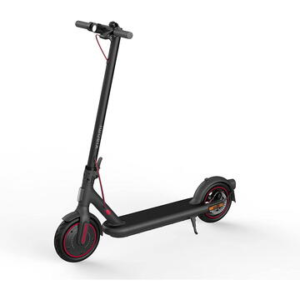  | |
| Price | |
| Our Rating | |
| Brand | XiaomiSegway |
| Category | Electric ScootersElectric Scooters |
General
| Model The Model specifies the exact version or name of the scooter. It helps identify its unique design, features, and specifications within the manufacturer’s product line. Knowing the model makes it easier to compare options, find compatible accessories, or look up support information. | Electric Scooter 4 ProNinebot F2 |
| Brand The Brand identifies the manufacturer or company that designs and produces the scooter. A trusted brand is a sign of quality, reliability, and good customer support. Well-known brands often have higher standards for safety, performance, and after-sales service, giving you more confidence in your purchase. | XiaomiSegway |
| Release Date The Release Date indicates when the scooter model was officially launched on the market. This helps you know how current the design, technology, and features are. A newer release date often means updated components, improved performance, and the latest safety or smart features. | 01 January 202301 January 2023 |
| Recommended Age Recommended Age indicates the minimum age range that the scooter is designed for, based on safety, size, and ease of use. Following the recommended age helps ensure that riders can handle the scooter’s speed, weight, and controls comfortably and safely. Always check local laws and use protective gear, especially for younger riders. | 16+ years16+ (region/retailer pages may show 14+ minimum) |
Performance & Power
| Motor Power (Wattage) What it means: The motor power, measured in watts (W), shows how strong the scooter’s electric motor is. Why it matters: Higher wattage usually means better acceleration, more torque, and improved performance on hills or rough terrain. For example, a 250W motor is good for flat city roads and light riders, while a 500W or 1000W motor provides more power for faster speeds or climbing steep inclines. | 350 W rated, up to 700 W peak350 W nominal, 700 W max |
| Top Speed The Top Speed indicates the maximum speed that the scooter can reach under optimal conditions. It’s usually measured on level ground with a fully charged battery and an average rider weight. A higher top speed allows you to travel longer distances faster, but always ensure you ride within legal speed limits and your personal comfort zone for safety. | 25 km/h; Pedestrian mode: 6 km/h, Normal: 20 km/h, Sport: 25 km/h30 km/h (18 mph) NA; 25 km/h (EU-limited) |
| Battery Capacity Battery Capacity refers to the total amount of energy the scooter’s battery can store, usually measured in ampere-hours (Ah) or watt-hours (Wh). A higher battery capacity means you can ride longer distances on a single charge, reducing the need for frequent recharging. Keep in mind that actual range can vary depending on rider weight, terrain, speed, and weather conditions. | 446 Wh (12,400 mAh)367 Wh (36 V, 10.2 Ah) |
| Estimated Range per Charge The Estimated Range per Charge indicates the average distance the scooter can travel on a single full battery charge. This range is calculated under optimal conditions, such as flat terrain, moderate speed, and average rider weight. Real-world range may vary depending on riding style, terrain, weather, and load. A longer range means fewer recharges and greater freedom for longer trips. | Up to 55 km claimed; real-world closer to 45–55 km40 km / 25 mi theoretical; ~30–33 km at max speed (test method) |
| Hill Climb Ability Hill Climb Ability describes the maximum incline or slope that the scooter can handle while maintaining stable performance. It’s typically expressed as a percentage or in degrees. A higher hill climb rating means the scooter can tackle steeper hills without losing too much speed or power. Actual climbing performance may vary based on rider weight, battery charge, and terrain conditions. | Up to 20% inclineup to 18% |
| Drive System The Drive System refers to how power from the motor is delivered to the wheels. Electric scooters typically use either a hub motor (directly integrated into the wheel) or a chain/belt drive system. A high-quality drive system ensures smooth acceleration, efficient power transfer, and low maintenance. The choice of drive system affects performance, noise level, and overall ride experience. | Rear-wheel drive (direct)Rear-wheel hub motor (RWD) |
Charging & Electrical
| Charging Time Charging Time indicates how long it takes to fully recharge the scooter’s battery from empty to 100% using the standard charger provided. Faster charging means less downtime and more time on the road. Actual charging time may vary slightly depending on battery capacity, charger output, and environmental conditions. | Approximately 8–9 hours~6.5 h |
| Battery Type Battery Type refers to the specific technology used in the scooter’s battery, which affects performance, lifespan, weight, and charging time. Most modern electric scooters use high-quality lithium-ion (Li-ion) batteries because they offer a good balance of energy density, durability, and low maintenance. A reliable battery type ensures consistent power delivery and longer riding ranges. | Lithium-ion with 5th-gen Smart BMS (six protections)Lithium-ion 36 V; Smart BMS protections |
| Removable Battery A Removable Battery means the battery pack can be easily detached from the scooter for convenient charging and replacement. This feature allows you to charge the battery separately, swap it with a spare for extended range, or securely store it indoors in extreme weather. Removable batteries add flexibility and make it easier to keep your scooter powered up wherever you are. | NoNo |
| Regenerative Braking Regenerative Braking is an energy-saving feature that converts some of the energy normally lost during braking back into battery power. When you slow down or brake, the motor works in reverse to generate electricity, which helps extend the scooter’s range and improves overall efficiency. This system also reduces wear on traditional brake components, leading to lower maintenance over time. | YesYes |
| Lighting Lighting refers to the built-in front and rear lights that enhance visibility and safety when riding in low-light conditions or at night. Good lighting helps you see the road ahead and ensures that other road users can see you. Many scooters include LED headlights, taillights, and sometimes brake lights or side reflectors for added safety and compliance with local traffic regulations. | 2.5 W ultra-bright front LED headlight, upgraded tail light with brake and reflector, side reflectorsFront LED headlight, rear/brake light, integrated turn indicators (E-Mark on EU variants) |
Build & Dimensions
| Scooter Weight Scooter Weight refers to the total weight of the scooter when fully assembled, including the battery. This affects how easy it is to carry, lift, and store the scooter when not in use. A lighter scooter is more portable and convenient for commuting, especially if you need to carry it upstairs or onto public transport. Keep in mind that a sturdy frame and quality components may add to the weight but also contribute to better durability and ride stability. | ~17.4 kg (38 lb)17.2 kg (approx. 37.9 lb) |
| Maximum Rider Weight Maximum Rider Weight indicates the highest rider weight that the scooter is designed to safely support while maintaining optimal performance and stability. Staying within this limit helps ensure reliable acceleration, braking, and climbing ability, and it protects the frame, suspension, and motor from excessive strain. Exceeding the recommended limit may reduce performance and increase wear on components. | 120 kg120 kg (265 lb) |
| Deck Size Deck Size refers to the dimensions of the scooter’s standing platform. A wider and longer deck provides more foot space, allowing you to stand comfortably and adjust your stance while riding. A well-sized deck improves balance and stability, especially on longer rides or at higher speeds. Compact decks, on the other hand, help keep the scooter lightweight and portable. | Wider deck, ~19 mm wider than standard 4~490 × 160 mm usable (rider-measured) |
| Handlebar Height Handlebar Height refers to the distance from the deck to the handlebars, which affects your riding posture and comfort. An appropriate handlebar height helps you maintain good balance, reduces strain on your back and arms, and makes steering more comfortable. Some scooters have adjustable handlebars to fit riders of different heights, while others have a fixed height for a streamlined design. | Extended, ~54 mm wider than standard 41214 mm (overall height, unfolded) |
| Folding Mechanism The Folding Mechanism describes how easily and securely the scooter can be folded for carrying and storage. A well-designed folding system lets you quickly collapse the scooter into a compact size, making it convenient to transport on public transit, store under a desk, or fit into a car trunk. Look for sturdy latches and safety locks to ensure the scooter stays firmly in place when folded or unfolded. | YesYes |
| Dimensions Folded Dimensions indicate the size of the scooter when it’s fully folded. This measurement shows how much space the scooter will take up when stored or carried, making it easier to check if it will fit in your car trunk, under a desk, or in a closet. Compact folded dimensions are ideal for commuters who need to bring their scooter on public transport or store it in tight spaces. | Compact for easy storage1143.5 × 570 × 484 mm |
| Material Material refers to the primary construction materials used for the scooter’s frame and key components. High-quality materials like aircraft-grade aluminum, reinforced steel, or durable composites provide strength, stability, and a lighter overall weight. A sturdy material ensures the scooter can handle daily wear and tear while maintaining safety and performance. | Aerospace-grade aluminum alloyHigh-strength steel frame (series messaging) |
Safety & Control
| Brake Type(s) Brake Type(s) describe the braking systems the scooter uses to help you slow down or stop safely. Common brake types include mechanical brakes (like drum or disc brakes), electronic brakes, and foot brakes. Many scooters combine multiple braking systems for added safety and shorter stopping distances. The type and quality of brakes affect your control, especially when riding at higher speeds or on slopes. | Front E-ABS regenerative, Rear 130 mm disc brakeFront disc + rear electronic regenerative (dual braking) |
| Suspension Suspension refers to the system that absorbs shocks and vibrations while riding, providing a smoother and more comfortable ride over uneven or rough surfaces. Scooters may have front suspension, rear suspension, or dual suspension for better shock absorption and stability. Good suspension helps reduce rider fatigue and improves control, especially when riding on bumpy roads or off-road paths. | None; relies on 10″ tubeless self-sealing DuraGel tiresNone |
| Tire Type Tire Type refers to the kind of tires the scooter uses, which directly affects ride comfort, traction, and maintenance. Common types include solid (airless) tires, pneumatic (air-filled) tires, or hybrid options. Pneumatic tires offer better shock absorption and a smoother ride on rough surfaces, while solid tires are puncture-proof and require less upkeep. The right tire type helps ensure safe handling and a comfortable ride in different conditions. | 10″ tubeless DuraGel (self-sealing)Tubeless self-sealing pneumatic with jelly layer (≈58 mm width) |
| Tire Size Tire Size indicates the diameter and width of the scooter’s tires, which affect ride comfort, stability, and how well the scooter handles different terrains. Larger tires generally offer better shock absorption and a smoother ride over bumps and rough surfaces, while smaller tires keep the scooter lighter and more portable. Choosing the right tire size helps ensure a balance between agility and comfort. | 10″ (front & rear)10-inch front & rear |
| Kickstand The Kickstand is a built-in stand that allows you to park your scooter upright when it’s not in use. A sturdy kickstand keeps the scooter stable and prevents it from tipping over, protecting it from scratches and damage. It also makes storing and accessing your scooter more convenient, whether you’re at home, work, or on the go. | YesYes |
| Water Resistance Rating Water Resistance Rating indicates how well the scooter is protected against water and moisture, usually shown as an IP (Ingress Protection) rating. This rating helps you understand whether the scooter can handle light rain, splashes, or wet roads without damage. While most scooters are not fully waterproof, a good water resistance rating adds peace of mind when riding in changing weather conditions. Always avoid deep puddles or submerging the scooter to protect its electrical components. | IPX4IPX5 |
Features & Extras
| Display/Console The Display (or Console) shows important real-time information about your ride, helping you monitor your scooter’s status at a glance. Typical displays show speed, battery level, distance traveled, and riding mode. Some models also include additional features like Bluetooth connectivity, app integration, or backlighting for better visibility at night. A clear and easy-to-read display enhances safety and convenience on every trip. | LED dashboard showing speed, mode, battery, lock status, etc.Color LED dashboard: speed, battery, modes, BT, indicators |
| Ride Modes Ride Modes refer to the different speed and power settings you can choose to match your riding style or road conditions. Common modes include eco for maximum range and energy efficiency, standard for everyday balance, and sport or turbo for higher speed and stronger acceleration. Switching between ride modes allows you to customize performance, conserve battery, and ride safely in various environments. | Pedestrian, Normal, Sport; switch via double-tap power buttonEco / Drive / Sport + Walk mode |
| Smart App Connectivity Smart App Connectivity lets you pair your scooter with a dedicated mobile app via Bluetooth. Using the app, you can monitor real-time ride stats like speed, battery level, and range, adjust settings such as ride modes or cruise control, lock the scooter for added security, and sometimes receive firmware updates. This feature adds convenience and allows you to personalize your riding experience right from your smartphone. | YesSegway–Ninebot App (lock, stats, firmware), Apple Find My tracking |
| Anti-Theft System The Anti-Theft System helps protect your scooter from unauthorized use or theft. This feature can include built-in alarms, electronic motor locks, GPS tracking, or remote locking through a mobile app. A good anti-theft system provides peace of mind when parking your scooter in public spaces, adding an extra layer of security to safeguard your investment. | Motor lock via App + unique hardware binding (UL IoT Gold)App motor lock; Apple Find My location (when enabled) |
| Cruise Control Cruise Control allows you to maintain a steady speed without continuously holding the throttle. This feature makes longer rides more comfortable by reducing hand fatigue and providing a smoother, more relaxed riding experience — especially on flat, open roads or bike lanes. For safety, cruise control can usually be easily activated or deactivated while riding. | YesYes |
| Accessories Included Accessories Included lists the additional items that come with the scooter to enhance your riding experience and convenience. Common accessories may include a charger, kickstand, bell, lights, phone holder, or carrying strap. These extras add value by making your scooter safer, easier to use, and ready to ride straight out of the box. | Charger (magnetic port), Allen key, reflectors, manualPower adapter/cable, toolkit & user materials (typical package) |
Warranty & Compliance
| Warranty Period The Warranty Period indicates how long the manufacturer guarantees the scooter against defects in materials and workmanship under normal use. A good warranty provides peace of mind, showing the brand’s confidence in its product quality. Always check what parts are covered, such as the frame, battery, and motor, and follow the maintenance guidelines to keep your warranty valid. | 12–24 months (varies by region)Typically 12–24 months depending on region/retailer (EU pages advertise 2-year core components testing/warranty messaging) |
| Certifications Certifications confirm that the scooter meets specific safety, quality, and environmental standards set by recognized organizations or regulatory bodies. Common certifications may include CE, RoHS, UL, or other local compliance marks, depending on your region. These certifications ensure that the scooter is manufactured to high standards and is safe and legal to use in your country. | CE, UL IoT Security Rating Gold, IPX4, TÜV-certified speed mode safetyUL 2272 compliance advertised for NA listings; E-Mark reflectors/indicators on EU units |
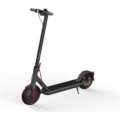 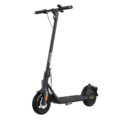 |


